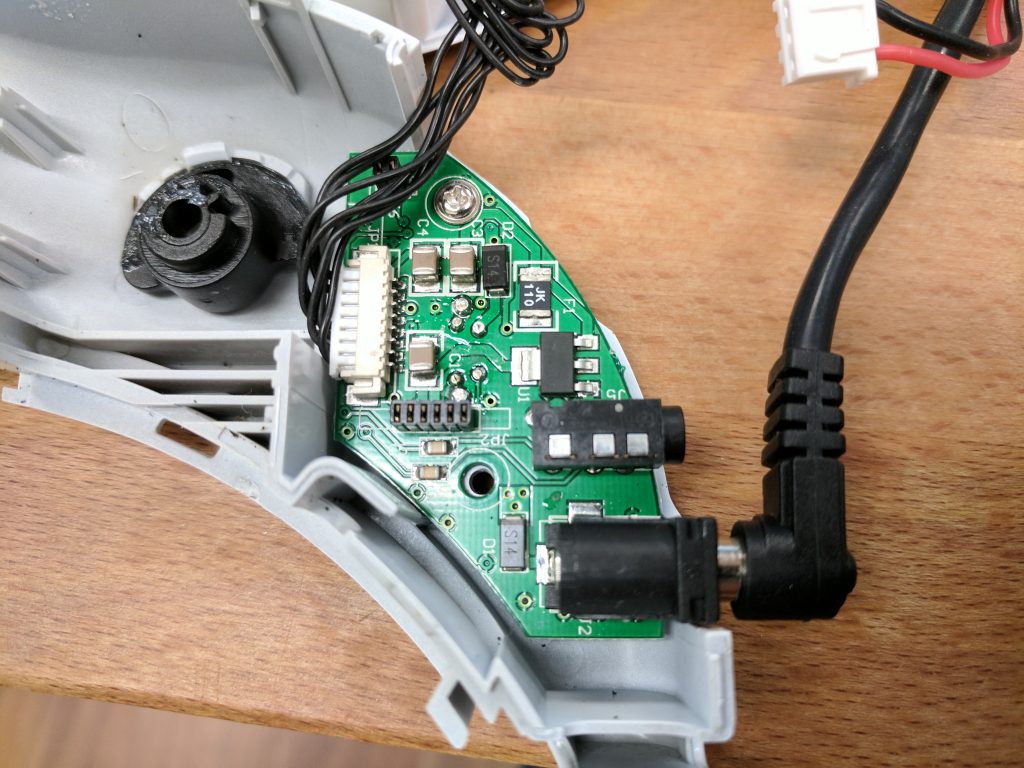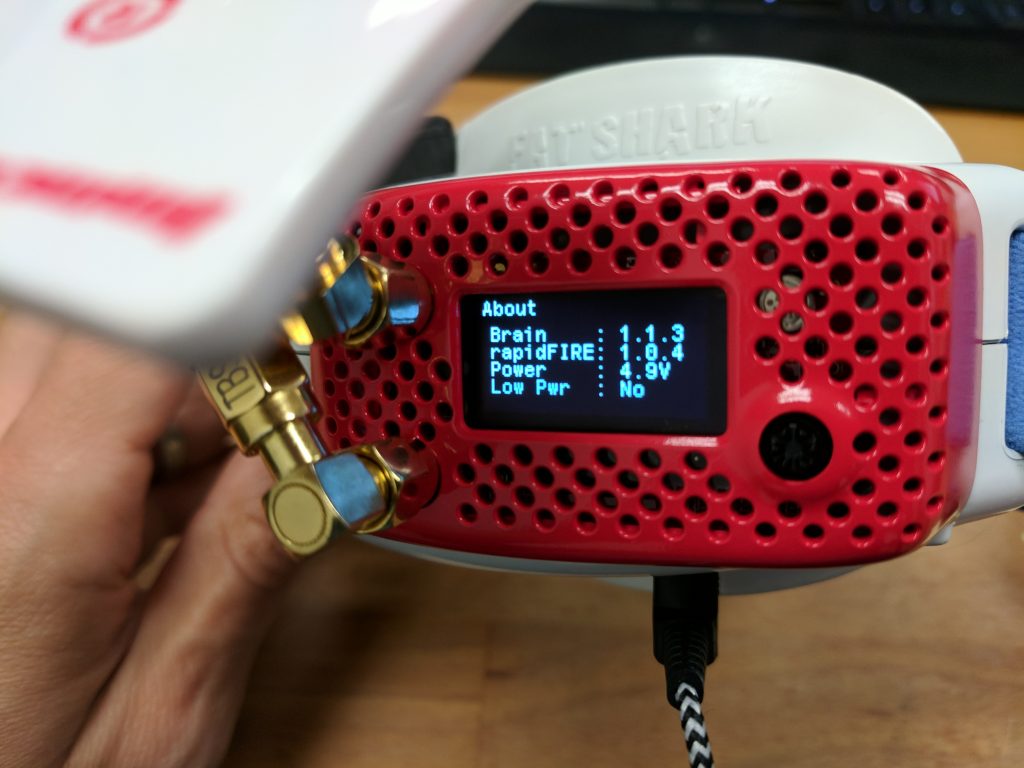ImmersionRC’s rapidFIRE module is fantastic in High Power mode. Alas, the L1 mod worked about 80% of the time on my Fat Shark HD3’s. Here’s a particularly nasty transition to Low Power mode:
Once the rapidFIRE drops into Low Power mode, my HD3s are toast for the day. Unplugging the goggle battery between flights allows the circuitry to slightly cool off, but diversity lasts < 1 minute if I immediately reconnect. Establishing a video lock sometimes takes 10 seconds or more after the HD3s overheat. The video feed rolls or tears before locking:
Diversity and video lock stability is only restored if I allow the HD3s to completely cool down. The solution is actually easy: Use the red Auxiliary Power Board!
Fat Shark DC Rails & Engineering Rambling
It’s well documented that Fat Shark HD3s must be modified, as the goggles cannot supply 350mA @ 5VDC demanded by rapidFIRE in High Power mode (aka, Low Pwr = No). Pull too much current and two things happen: voltage drops, and circuitry overheats.
Peeking inside, I noticed the Fat Sharks use linear regulation. The barrel power jack feeds U1 on the Fat Shark’s power supply board. U1 is an LM1117 low-dropout 5.0VDC regulator in a 4-pin SOT package. Wires from the power supply feed all other boards in the Fat Shark goggles.

Linear regulation is economical and tends to produce low noise, low ripple DC outputs. However, it’s inefficient. The higher the current draw, the hotter the regulator becomes.
At this pricepoint, I’d prefer to see a properly executed switching power supply at the DC input and local LDO regulation at the receiver bay and DVR boards.
While U1 could easily be replaced with a 5V BEC or simple switcher, it’s not the culprit. I measured output of U1 and compared to the 5V pin at the receiver bay. U1 consistently measures at 5.0V, while the receiver bay sags to 4.9V in Low Power mode, and in High Power mode with the L1 mod, receiver bay voltage starts at 4.9V but slowly drops to <4.5V before transitioning to Low Power mode. Fat Shark has taken care to add local regulation, like the L1 and L10 inductors we’re shorting to boost available current to the receiver bay 5V pin. Unfortunately, shorting these components is not enough!
A Better Fat Shark 5V Mod
I was fed up with the L1 mod crapping out after only a few flights. Knowing that the HD3’s main regulator supplies a stable 5.0VDC rail, it made sense to try installing the Auxiliary Power Board supplied with the rapidFIRE.
You can use the Auxiliary Power Board and L1 mod simultaneously. There’s no advantage in doing so, and also no harm.
Rather than tape the flex PCB wire to the outside of the goggles, I drilled a 1/8″ hole into the receiver bay and fed the wire through the chassis:
First Impressions with Auxiliary Power Board
All back together, the Aux Power Board allowed my rapidFire to maintain diversity for an entire hour of flying (no dropouts or glitches in 86F weather). This was never possible with the L1 mod, so problem solved?



I just did the mod the same way you did on my Dominator V3’s and I agree that this is a way better solution than modding the board. It feels way less obtrusive and is basically following the instructions from immersionRC verbatim (except for the little tiny hole). Seems like a win for both devices’ warranties too.
Great insight into the circuitry as well by the way!
so whats the correct way to do the mod to the HD3’s,
L1 w L10 mod, or
L1 w red Aux. board,or
L1 w L10 and Aux. board ? which is the best combination for full power with it being efficient over time ?
For reliability, use the Aux board and skip the L1 and L10 mods.
Is there any posibility without using that cable.. The plug on my rapidfire module is broken from the board and took some pads with it, so it’s not repairable by soldering.